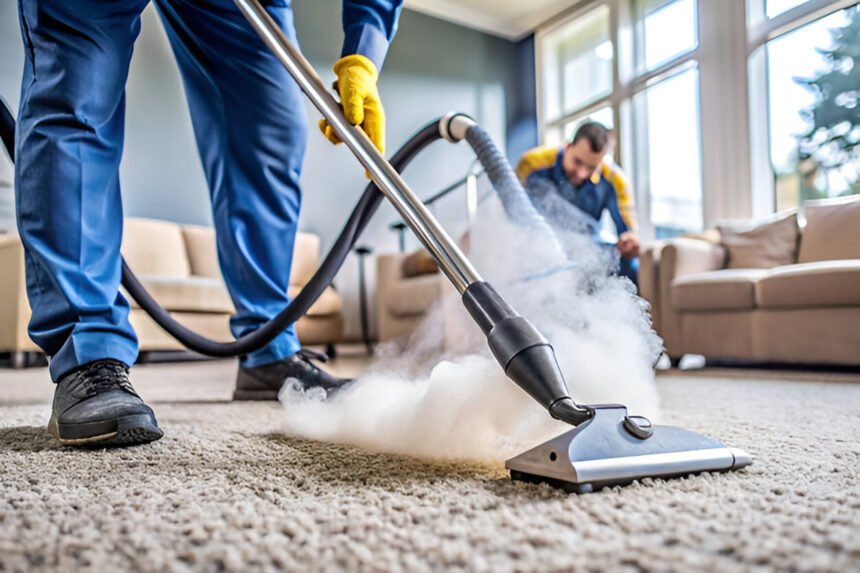Carpets are a popular choice for flooring in homes and businesses due to their comfort, warmth, and aesthetic appeal. However, to maintain their beauty and longevity, proper carpet cleaning is essential. Regular cleaning not only enhances the appearance of your carpets but also promotes a healthier indoor environment by removing dirt, allergens, and bacteria. In this comprehensive guide, we will delve into the various methods, tips, and best practices for effective carpet cleaning.
Importance of Carpet Cleaning
Regular carpet cleaning is crucial for several reasons. First and foremost, clean carpets enhance the overall appearance of a room, making it look fresh and inviting. Additionally, carpets can harbor dirt, dust, allergens, and bacteria that can impact indoor air quality and contribute to respiratory issues. By maintaining clean carpets, you create a healthier environment for yourself and your family.
Moreover, regular cleaning helps to prolong the life of your carpets. Dirt and debris can accumulate in the carpet fibers over time, causing them to break down and wear out more quickly. By removing these particles through regular cleaning, you can extend the lifespan of your carpets and protect your investment.
Types of Carpet Cleaning Methods
There are several methods for cleaning carpets, each with its own benefits and drawbacks. Here are some of the most common carpet cleaning methods:
1. Vacuuming
Regular vacuuming is essential for maintaining clean carpets. It helps to remove surface dirt, dust, and debris before they can settle into the carpet fibers. Vacuuming should be done at least once a week, more frequently in high-traffic areas.
2. Steam Cleaning (Hot Water Extraction)
Steam cleaning, also known as hot water extraction, is a popular method for deep cleaning carpets. It involves spraying hot water and detergent onto the carpet and then extracting the dirty water with a powerful vacuum. Steam cleaning is effective at removing deep-seated dirt, stains, and allergens from carpets.
3. Dry Cleaning
Dry cleaning methods, such as encapsulation or dry foam cleaning, use minimal moisture to clean carpets. These methods are suitable for carpets that cannot withstand wet cleaning or for situations where quick drying times are essential. Dry cleaning methods can be less effective for heavily soiled carpets.
4. Shampooing
Carpet shampooing involves using a special detergent to scrub the carpet and then extracting the dirty water with a wet vacuum. While shampooing can be effective at removing stains, it may leave behind residue that can attract dirt, making the carpet get dirty faster.
5. Bonnet Cleaning
Bonnet cleaning is a low-moisture carpet cleaning method that involves using a rotary floor machine with a cleaning pad soaked in a cleaning solution. The machine agitates the carpet fibers to loosen dirt, which is then absorbed by the cleaning pad. Bonnet cleaning is often used for routine maintenance in commercial settings.
Tips for Effective Carpet Cleaning
To ensure that your carpets are cleaned thoroughly and effectively, consider the following tips:
1. Act Quickly on Stains
When a spill occurs, it’s essential to act quickly to prevent the stain from setting into the carpet fibers. Blot the spill with a clean cloth or paper towel, avoiding rubbing, which can spread the stain. Use a carpet stain remover or a mixture of water and vinegar to treat the stain.
2. Use the Right Cleaning Products
When cleaning your carpets, be sure to use the appropriate cleaning products for your carpet type and the specific stains you are dealing with. Using the wrong products can damage the carpet fibers or set stains permanently.
3. Test in an Inconspicuous Area
Before applying any cleaning solution to your entire carpet, test it in a small, inconspicuous area to ensure that it does not cause discoloration or damage. This step is especially crucial for carpets made of delicate or natural fibers.
4. Hire Professional Carpet Cleaners
For deep cleaning and maintenance, consider hiring professional carpet cleaners. They have the expertise, equipment, and cleaning solutions to ensure that your carpets are cleaned effectively without causing damage.
5. Regular Maintenance
In addition to regular vacuuming, schedule professional carpet cleaning at least once a year to remove deep-seated dirt and grime. This will help to maintain the appearance and longevity of your carpets.
Conclusion
In conclusion, proper carpet cleaning is essential for maintaining the appearance, hygiene, and longevity of your carpets. By adopting regular cleaning practices, using the right cleaning methods and products, and seeking professional help when needed, you can ensure that your carpets remain clean and fresh for years to come. Remember, a clean carpet not only enhances the beauty of your space but also contributes to a healthier indoor environment. So, make carpet cleaning a priority in your home or business to enjoy the many benefits it offers.





